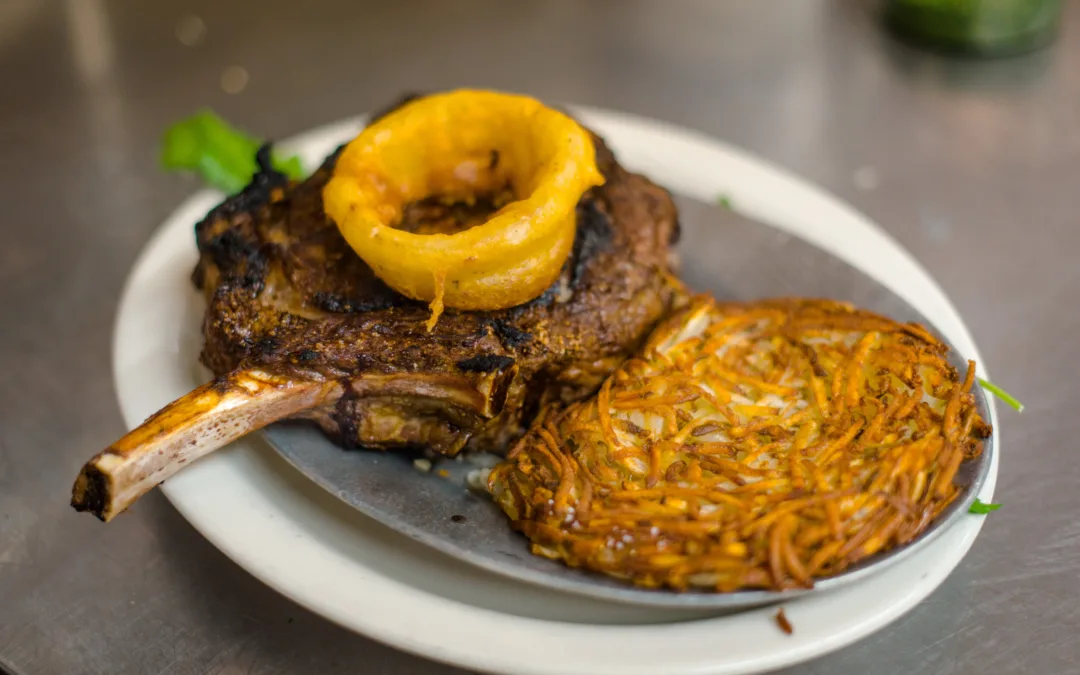
Students learn Ho-Chunk language at the Black RIver Falls High School.
Students taking Ho-Chunk classes are feeling a responsibility to reclaim their culture, beginning with their endangered language.
Karolann Mann, a junior, sits in her afternoon class at Black River Falls High School in midwestern Wisconsin, eagerly soaking up all the words and phrases she can.
“I took Ho-Chunk class so I can have the connection between my grandmother and my dad,” Karolann said. “They grew up with Ho-Chunk being their first language, so that was really important to me to learn.
Classroom vibes
“How do I say ‘horse?’
“Šųųkxete!”
“How do I say donkey?”
“Sųųkxete nąącawaxete!”
“What is a ‘wažą honąkipįnį?’”
“Bike!”
The class is quiet but responsive as Ho-Chunk language instructor Andrea McCaskey, known as “Haas” (“Berries” in Ho Chunk) poses questions and her students call out the answers.
At a glance, the unassuming scene may resemble a typical Spanish or German class at any other high school—conjugating verbs and learning how to pronounce vocabulary words. But for Haas and her students, there’s so much more taking place.
“Offering Ho-Chunk language to these high school students is important because it will help them feel more connected to their culture and heritage, as well as give them the tools to succeed in keeping our traditional way of life going, even after the inevitable happens when we lose our elders who were first language speakers,” Haas said.
“Bringing this here to the high school has given these students a sense of ownership in doing their part to keep their culture alive.”
Big responsibilities
The Ho-Chunk Nation has a strong cultural and educational program, which promotes the Ho-Chunk language and traditions. These efforts are critical to ensuring that the Ho-Chunk Nation’s cultural heritage is passed down to future generations.
The language classes are offered through five Wisconsin public school districts in partnership with the Ho-Chunk Nation Language Division, which provides instructors to Nekoosa, Tomah, Wisconsin Dells, Baraboo, and BRF. They’re selected because of the higher tribal populations.
Of more than 450 school districts in Wisconsin, 16 have a 10% or greater Native American student population. BRF is 7th on that list in terms of enrollment.
There’s a little more weight on some students taking this class. It’s not necessarily being taken for a college requirement, or simply for fun to fill the class schedule.
“It feels like we have to carry on this language tradition to set the path for younger generations,” student Karolann shared. “People look up to us almost, so if we start speaking our language, everyone else will, so that’s pretty big shoes to fill.”
Karolann’s classmates feel the same sense of urgency. “It’s important because we do not have a lot of fluent speakers left—and those are the people we can really learn from,” junior Hannah Falcon said.
“Not many young people—my age—know our language and it’s sad, because it’s dying out,” said senior Mia Falcon.
Fewer than 40 first-language speakers of Ho-Chunk are alive across North America. That means that learning the language is a race against time.
“We were told when we lose our language, we lose who we are,” Haas said. “Language is given to us from the Creator and it’s a sacred language, so when our language goes, so do our ways.”
“That’s always been in the back of my head and my motivation to keep going, keep learning, and keep sharing the knowledge I do have about our language and our culture, because I want us as Ho-Chunk people to be around forever.”
History in Wisconsin
The Ho-Chunk Nation has faced many challenges over the years, including forced relocation and assimilation policies in the 19th and 20th centuries. Oral history suggests some of the tribe may have been forcibly relocated up to 13 times by the US federal government to take land through forced treaty cession. In the 1870s, a majority of the tribe returned to their homelands in Wisconsin. Under the Homestead Act, some tribal members gained title to 40-acre parcels of land.
Despite these challenges, the tribe has made significant strides in recent years to improve the lives of its members.
Respect for the heritage
While there’s a fairly large population of Indigenous students in the school—about 20-30% Haas said—it’s not just members of the tribe who have taken special interest in the language.
“We have a mix of students—we have a lot of students that are Ho-Chunk as well as students that are part of the majority,” Haas said.
“We also have teachers in the school who are taking it upon themselves to ask questions to be able to use more Ho-Chunk in their classroom, or to understand what our kids are saying to each other.”
She said with that, her Indigenous teenagers feel ‘safe and seen.’
“It’s a good way to enforce what they’re learning, genuinely connect with them, and show an interest in something that’s meaningful to them,” said biology instructor Zach Pogorzelski.
He makes a point to learn some things from them each week.
“I noticed that when I would ask them phrases and talk to them about the language, it allowed them to share personal stories.”
“When you show an interest, it means a lot to them.”
Bringing it home
BRF High School Principal Kim Penza appreciates the opportunity for her students. “It gives the kids a space for belonging and acceptance.”
Beyond that, it extends into the home, with the elders who are eager to share the language with their grandchildren in ways they weren’t able to in the past, as they assimilated and stopped speaking their native language.
“Those elders are coming back to the language, those elders are remembering what they learned as a child, and that is a beautiful thing to see,” Haas said.
“There are some words I will throw at my grandma at home—like ‘Kųųnįka’ means grandmother in Ho-Chunk—so I’ll walk into her room and say, ‘What’s up Kųųnįkaa?’ and she’ll laugh!” Karolann said.
Politics

Biden makes 4 million more workers eligible for overtime pay
The Biden administration announced a new rule Tuesday to expand overtime pay for around 4 million lower-paid salaried employees nationwide. The...

Biden administration bans noncompete clauses for workers
The Federal Trade Commission (FTC) voted on Tuesday to ban noncompete agreements—those pesky clauses that employers often force their workers to...
Local News

Readers Poll: Top Bowling Alleys in Wisconsin
Looking for the best bowling in Wisconsin? Look no further! Our readers have spoken in our recent poll, and we have the inside scoop on the top...

8 Wisconsin restaurants Top Chef judges are raving about
Top Chef’s 21st season is all about Wisconsin, and on-screen, it’s already apparent that the judges feel right at home here. But, while filming in...


